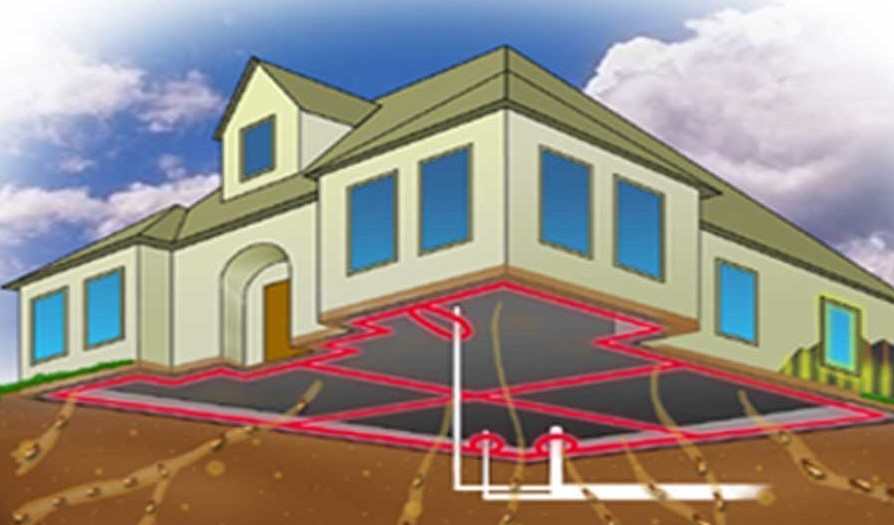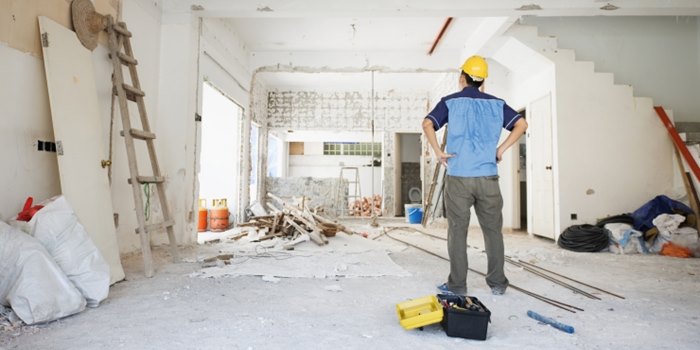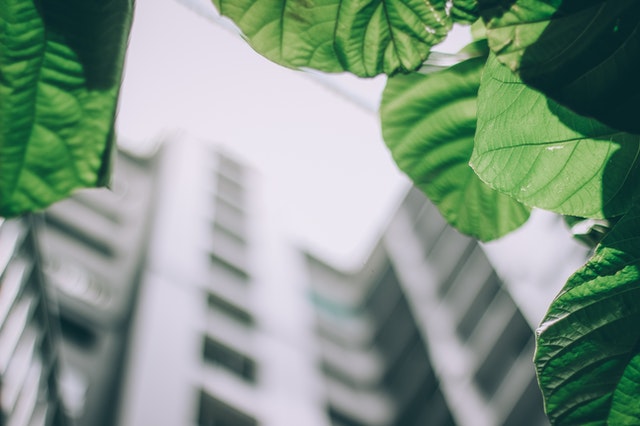Most of the buildings may be damaged due to the termite attack. Most of the wooden structures such as doors, windows, roof trusses, ceilings, roofs, wardrobes etc are badly affected by the termite attack. The termite control in buildings is necessary because the buildings which are affected by the termite attacks become unsuitable for shops, stores, record rooms and also for living rooms.
The termites enter the buildings through cracks, or hollow in masonry walls, pipes, walls, doors, ceilings, joints of floors etc. After entering the building they start eating timber, furniture, clothes, carpets, books, wooden ceilings etc. they get in their way. If their contact is broken they cannot reach their nest in underground and die.
Termite Control Measures in New Buildings
The type termite of control measures depends on whether it is to be adopted for new construction or to the old existing buildings.
Following methods are adopted for keeping the buildings free from termite in case of new constructions.
Site treatment
The breeding of the termites in the area for new buildings should be removed by removing tree roots, stumps, waste timber pieces, plant debris etc.
Soil treatment
All termites in the soil should be killed or prevented from breeding by anti-termite treatments.
30 cm wide, 50 cm deep narrow trench is generally dug adjacent and around the foundation walls and the columns, piers foundations and poisoned soil is filled in it. A dosage of 15 litres in the one-meter length of the trench of the following anti-termite mixture should be used for poisoning the trench soil:
- 10% solution of sodium arsenite in water.
- 5% solution of pentachlorophenol in fuel oil.
- One part of creosote 2-3 parts of kerosene oil.
- 3% solution of DDT in kerosene oil.
- 5% solution of Aldrin, Dieldrin and chlordane at the rate of 5 litre/meter trench may be used.
- Floor Treatment
Before laying the floor the dose of the above solutions should be sprayed on the ground at the rate of 4.5 l/m2 of the floor area. After this, the soil should not be disturbed or excavated as will disturb the poisonous barrier between the floor and the termite.
Mound Treatment
If the ground contains termite mounds, these must be destroyed by using anti-termite solutions. After breaking open mounds the insecticides should be poured over it. The quantities which are recommended for a mound having about 1 cubic meter volume:
- 5 to 1.7 kg DDT powder (10%).
- 7 litres of 2-3% solution of sodium arsenite in water.
- 25-30 litres of 0.5-1% suspension in water of gamma benzene-hexachloride.
- 5-4 litres of 0.004% emulsion of aldrin in water.
Construction of Anti-termite Obstacles
Sometimes certain obstacles are constructed at various positions to prevent the movement of termites. Following types of obstacles are mostly suitable for it.
The foundation should be constructed with dense concrete or solid materials impervious to termites. Cement mortar should be used with brick and stone foundations.
Cement concrete to be used in place of lime concrete in foundations. Mixing water of cement concrete should be replaced by 0.5% emulsion of dieldrin anti-termite.
Floors Treatments
When the concrete layer is laid at plinth level projecting both sides, the floor should be laid butting over it. The best method is to continuously lay the concrete floor over the plinth also projecting the external walls and making it as the shield in the whole building at plinth level.
Joints Treatments
The joints should be filled with cellulose impregnated with an anti-termite chemical. The joints should also be sealed at the top with coal tar pitch.
Timber Treatments
All timber should be treated with anti-termite treatments.
Termite control in Existing Buildings
The termite should be treated in existing buildings in the following ways:
Creation of poisoned soil around the foundation:
For making poisonous soil barriers around the foundation, 30 cm wide and 50 cm deep narrow trench is dug and filled with poisonous earth with the anti-termite mixture.
Termite nest destructions
All the termite nests within 50 m radius of the building should be opened up and destroyed with anti-termite chemicals.
Repair of cracks, entry passages of termite
The cracks should be repaired to close all the entry passages, the timber should be treated with the anti-termite chemicals. The buildings should be regularly inspected, brushed and whitewashed.
Treatment of termite tunnel and runways
All the termite tunnels and runways must be broken and properly treated for the killing of termites with the anti-termite chemicals. The obstacles should be placed at various positions to remove the termite.
Precautions
Following precautions must be taken, because these chemicals are toxic to humans:
- The chemicals should be handled with care.
- Hand-gloves, gumboots and respirator should be used by the applicator.
- All food, drinking water should in no way be allowed to come in contact with these chemicals.
- Empty containers of chemicals and surplus remaining solution should be disposed of the underground by digging holes.
- If the chemical comes in contact with any part of the body, it should be immediately washed with warm soapy water.
The buildings which are having anti-termite treatments mostly become safe for several years against termites. But even then the routine inspection is needed to check the presence of termites. If their presence is detected, it should be immediately destroyed by anti-termite treatments.



H.No:4-6-55, Kumarpally, Hanamkonda, Andhra Pradesh state of the Telengana, Pin Code:506001.